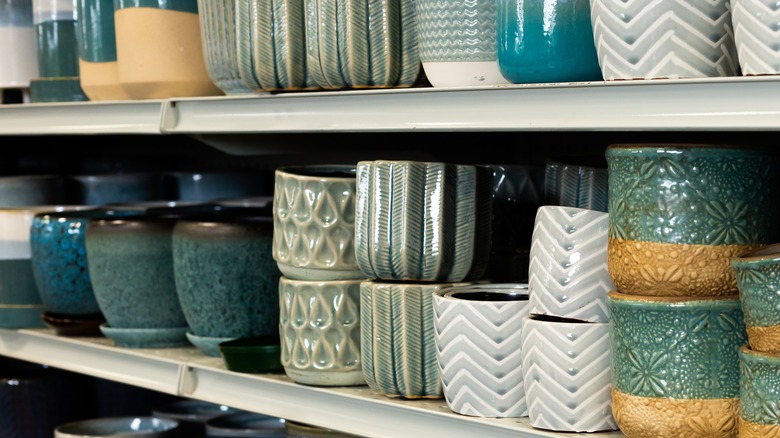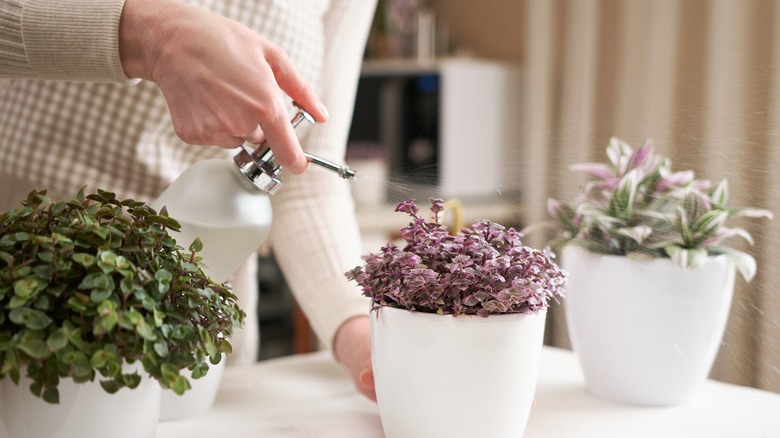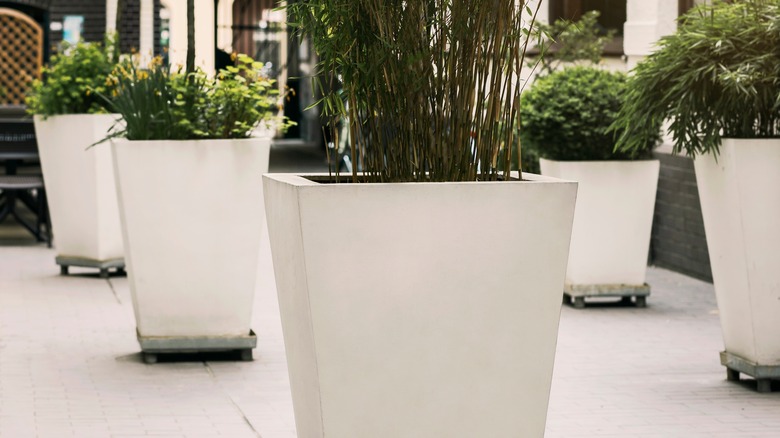The Pros & Cons Of Ceramic Plant Pots To Know What Is Best For Your Leafy Friends
We may receive a commission on purchases made from links.
There are an almost endless number of containers, planters, pots, and even grow bags you can put plants in. In addition to the variety of common household objects you can turn into planters, you can also find excellent options in shops and garden centers. Ceramic pots and planters are often some of the most stunning and ornately decorated options available. Ceramic pots aren't just beautiful, though; they can also be practical and, in many situations, can even be the best option for your plant. Because of their ability to keep soil moist longer, ceramic pots are often, though not always, the best options for plants and locations where dry soil can be an issue.
Safety is always the most important thing to consider when choosing a pot, though. If you are growing berries, veggies, herbs, or any other type of edible plant, you want to make sure that you aren't growing them in anything that could potentially leach toxic chemicals into the soil. Unless you are confident that the glaze and other materials in a planter are food-safe, you may want to avoid growing edible plants in it. As long as this is not a concern, you should consider where you're growing your plant, what type of plant is in it, and what weather conditions the planter will be exposed to when deciding what type of planter to use.
Moisture retention and ceramic pots
One of the biggest advantages of ceramic pots, other than their beauty, is their ability to keep soil moist. For plants native to rainforest biomes, this can be great, as they often benefit from consistently moist soil. Some plants just don't thrive in porous terracotta pots. This also gives ceramic pots an advantage in full sun locations, where plants could struggle from drying out too quickly if they are planted in terracotta or other porous planters.
Of course, the flip side of this is that ceramic pots can easily create too moist of an environment for cacti and succulents. You may also find that they aren't a good option for full-shade areas, where a faster-drying planter may be better for preventing overly moist soil and fungal issues. Of course, as with any planter, it's important to check that there are sufficient drainage holes at the bottom of your ceramic pot before you begin planting into it. If necessary, you can add additional drainage using a drill bit designed for use on ceramics.
Weight, weather, and ceramic pots
As potentially beneficial as ceramic pots can be for helping retain soil moisture, they aren't generally the best option during winter weather. Depending on the climate where you live, you should consider reaching for a different planter for your winter container garden. Ceramic pots, as well as terracotta ones, can be vulnerable to cracking due to the cycles of freezing and thawing they have to endure during cold seasons. If you have to leave ceramic pots out in cold weather, consider protecting them with bubble wrap or blankets.
Another downside to ceramic pots can be their weight. While this isn't always a problem, it can make them far more difficult to move than plastic pots or grow bags. Placing them on a plant stand with wheels can help make this potential issue far more manageable and allow you to more easily move your plant.


